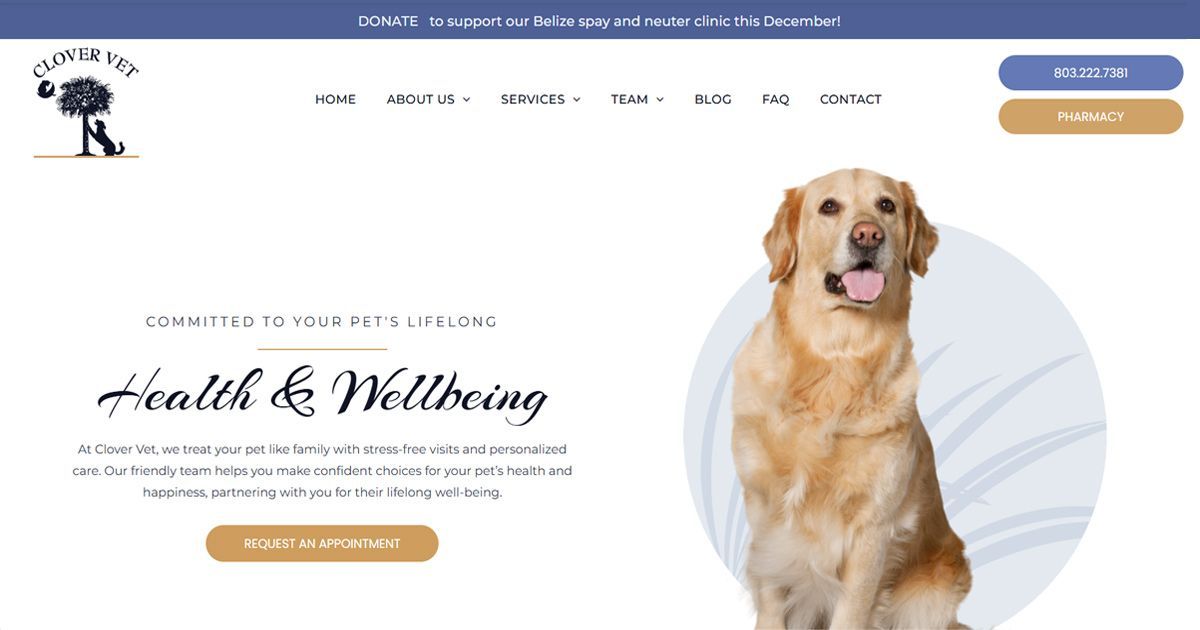Preventing Website Scams and Online Hacking Attacks
Staying Secure in the Digital Age: Measures for Preventing Website Scams & Online Hacking Attacks
Online security is now more important than ever in the fast-moving and linked world of the internet. Cybercriminals are constantly changing their strategies, making people and companies more susceptible to internet hacking attempts. In this thorough tutorial, we'll examine the many ways that people might become internet hacking victims and the disastrous results that follow.
However, With the correct information, you can take preventative measures to strengthen your digital defenses since knowledge is power. We expose the typical weaknesses that hackers use and provide you with efficient preventative methods to safeguard your private data and maintain your online safety. Understanding the strategies employed against us enables us to take control of our cybersecurity and confidently move through the digital environment.
Common Methods of Hacking Online
Phishing
Phishing is the practice of tricking someone into divulging critical information or login credentials through false emails or texts. To elicit urgency or anxiety, cybercriminals develop compelling messages that frequently look to come from reliable sources, often requesting sensitive data like email addresses. They could employ harmful attachments to obtain personal information, direct recipients to phony websites, or infect devices with malware.
How to Prevent It
It's essential to be on the lookout for phishing efforts. People should always double-check the legitimacy of emails and communications, avoid clicking on questionable links, and hold off on sending personal information unless they are positive of the sender's identity. People may successfully guard themselves from falling prey to phishing assaults by exercising caution and knowledge.
Malware
Malicious software, or malware, is created to penetrate computer systems to steal data, inflict harm, or interfere with regular operations. There are many different types of this destructive software, including viruses, worms, Trojan horses, and ransomware. Once installed, malware may quickly propagate across a system, taking advantage of holes to access confidential data without authorization. Some malware has been designed expressly to stealthily monitor and exfiltrate data, while other viruses may encrypt files and demand ransom payments to unlock them.
How to Prevent It
Strong cybersecurity precautions are needed to protect against malware, including the use of reliable antivirus software, routine OS and app updates, and being watchful while downloading files or opening links. People may successfully defend against the risks presented by malware and protect their digital assets by being proactive and alert.
Ransomware
A form of malicious software called ransomware infiltrates computer systems and encrypts user-inaccessible files. In order to obtain the decryption key needed to unlock the files, the attackers demand a ransom from the victim. Attacks with ransomware may cause great disruption and financial harm to people and organizations.
How to Prevent It
Maintaining current backups of crucial files and avoiding clicking on dubious links or downloading attachments from unknown sources are both crucial for protecting against ransomware. Additionally, updating operating systems and apps and employing dependable antivirus software will help avoid ransomware infestations. In order to protect against the threat of ransomware and maintain the integrity of priceless data, it is essential to be proactive and watchful.
Social Engineering
Cybercriminals use social engineering, a deceptive technique, to manipulate people, obtain private information, or persuade them to do something they don't want to do. To dupe their victims, these attackers employ a variety of psychological ploys, including acting as reliable sources, invoking urgency, or playing on their vulnerabilities. They could take the form of coworkers, tech support staff, or authoritative figures to persuade people to reveal private information like passwords or financial information. Social engineering occasionally causes users to unintentionally install viruses or allow unauthorized access to their computers.
How to Prevent It
The best way to prevent social engineering attacks is to develop a healthy skepticism towards unsolicited requests, confirm people's identities before disclosing personal information, and regularly teach people about cybersecurity awareness. People may safeguard themselves and their organizations from falling victim to social engineering initiatives by exercising caution and being educated.
Unsecured Wi-Fi Networks
Wi-Fi networks that aren't secure are popular targets for online criminals looking to intercept confidential information, even in places like coffee shops. Hackers have the ability to eavesdrop on data being carried between devices and Wi-Fi routers by taking advantage of flaws in these unsecured or inadequately protected connections.
They can utilize unencrypted data, including login passwords or personal information, for harmful reasons like identity theft or unauthorized account access once they get access to it. To protect your data while using public Wi-Fi, always ensure you connect to secure networks or use a virtual private network (VPN) for added protection.
How to Prevent It
Wi-Fi networks must be secured with robust passwords and encryption mechanisms, such WPA2 or WPA3, in order to counteract this danger. A further degree of security may be added by avoiding public Wi-Fi networks for important transactions and utilizing virtual private networks (VPNs), which guarantee that data is encrypted and hidden from prying eyes. Personal information and sensitive data may be protected against potential interception by hackers by being watchful and cautious about the Wi-Fi networks used.
Weak Passwords & fake password reset links
Weak passwords constitute a serious security concern because hackers will try to use them to access accounts without authorization. These passwords are frequently brief, straightforward, or readily guessed, which makes them vulnerable to brute force assaults, in which hackers repeatedly try different combinations until the right one is discovered. Further weakening security is the use of obvious terms, dates of birth, or other readily available personal information as passwords.
Scammers will also send you links posing as familiar accounts you may use or organizations you've interacted with or that sound official, such as businesses, government organizations and trusted service providers. The emails will look like big brands and will often threaten to discontinue your service if you don't take action and they will include a link to ask you to reset your password right away.
How to Prevent It
People should choose strong passwords that mix upper- and lowercase letters, digits, and special characters to strengthen defenses against such assaults. Security can also be improved by often changing passwords and avoiding using the same one for several different accounts. By requiring a second verification step in addition to a password, two-factor authentication (2FA) offers an extra layer of security or by using an authenticator app. Users may defend their online accounts against unauthorized access and prevent sensitive information from getting into the wrong hands by adopting strong password practices.
For fake password resets:
- Never give passwords or authentication codes to callers.
- Only reset your password if you initiated the reset. Companies typically won't email you links to reset your password without you requesting it. When in doubt, go directly to the website, not through the email or text link, and reset your password there.
- Look carefully at the email address of the sender. Make sure it's spelled correctly. Mouse over the email to make sure the address that pops up is the same as the address you see in the sender field.
Brute Force Attacks
Hackers use brute force attacks to repeatedly test different password combinations until they find the one that gives them access to a system or account. This technique makes use of automated software that quickly creates and tests a variety of passwords, taking advantage of flaws in passwords that are weak or inadequately secured. Brute force assaults can take a while to complete, but they finally succeed in accessing accounts with easy or obvious passwords.
How to Prevent It
Users should always use strong and complicated passwords that combine capital and lowercase letters, digits, and special characters to reduce the danger of falling victim to such assaults. By temporarily preventing access after a certain number of unsuccessful login attempts, account lockout rules can help counter brute force assaults.
Man-in-the-Middle (MITM) Attacks
Attacks known as "man-in-the-middle" (MITM) include online criminals listening in on or changing the data being communicated between two parties. Hackers use this advanced technique to covertly place themselves between the sender and receiver, thereby acting as a silent middleman. Without either side being aware of the intrusion, they can intercept sensitive information including login passwords, financial information, or private communications. To carry out their nefarious deeds, MITM attackers may take advantage of holes in unprotected public Wi-Fi networks or infiltrate routers.
How to Prevent It
Individuals and organizations should utilize secure communication methods, such as encrypted webpages (HTTPS), virtual private networks (VPNs), or secure messaging applications, to protect sensitive information, including credit card details or bank account information, from MITM assaults. Identification and prevention of MITM attacks also depend heavily on checking digital certificates and being watchful for strange activities during online transactions. Users may successfully safeguard their data, financial transactions, and personal information from unauthorized eavesdropping and modification by attackers by emphasizing secure connection techniques and staying vigilant.
SQL Injection
A common hacking method that targets online applications with lax security is SQL Injection. In this attack, malicious SQL (Structured Query Language) code is inserted by taking advantage of flaws in input fields or improperly written database queries. They are able to alter the application's database, obtain unauthorized access to private data, or issue unauthorized instructions by doing this. Attacks using SQL Injection can have dire repercussions, giving attackers access to view, alter, or delete data, steal user credentials, or even take over the entire application.
How to Prevent It
In online application development, comprehensive input validation and parameterized queries are required to prevent SQL Injection. SQL Injection attempts can be successfully thwarted by using security measures including input filtering, utilizing prepared statements, and restricting database rights. Developers may defend against unauthorized database access and protect sensitive data from being used by malevolent hackers by enhancing the security of their online applications.
Cross-Site Scripting (XSS)
Web applications and their users are the subject of the malicious assault known as cross-site scripting (XSS). Malicious scripts are injected into websites during an XSS attack, which is subsequently accessed by other users of the same application. These scripts have the ability to steal private information from unaware users, such as login credentials or personal information, or carry out unauthorized tasks on their behalf. As they directly undermine the confidence and security of websites, XSS assaults may be especially hazardous because they put users at risk of identity theft or financial fraud.
How to Prevent It
Web developers must apply adequate input validation and output encoding to guarantee that user-generated content does not run malicious scripts on the web pages in order to prevent XSS attacks. To prevent being a victim of possible XSS vulnerabilities, web application users should take caution while clicking links or entering personal information on websites. Developers and users may successfully fend off XSS attacks and protect against unauthorized script injections by following secure coding best practices and upholding user awareness.
Zero-Day Exploits
Zero-Day Exploits are sophisticated cyberattacks that rely on previously unknown software flaws. Since the program creators are unaware of these flaws, there is no time to produce and distribute updates before hackers may take advantage of them. Attackers have a big edge thanks to zero-day exploits since they can get into systems, steal confidential information, or jeopardize security without being noticed. These vulnerabilities are frequently used by cybercriminals to install malware on devices, get into networks without authorization, or launch specialized attacks.
How to Prevent It
It is essential for software developers and security professionals to proactively discover and resolve such vulnerabilities through routine security audits and testing in order to safeguard against Zero-Day Exploits. Additionally, users should keep their security software up to date and immediately apply patches when updates are made available since these upgrades frequently cure vulnerabilities that have just been found. Individuals and organizations may lessen the danger presented by Zero-Day Exploits and strengthen their overall cybersecurity defenses by being watchful and proactive.
Letter from Domain Listings! Important!
There is a scam going around where phony letters are sent out and pretend to offer services for domain or directory listing and website visibility. These letters sometimes take the form of official invoices and demand payment for services that the recipients neither requested nor need. Unwary website owners run the risk of falling for this scam and having their financial and personal information compromised. These dishonest letters aim to deceive recipients into paying for phony services for their website, which might result in loss of money or possibly identity theft.
How to Prevent It
It's critical to remain watchful against these frauds as we concentrate on stopping internet hacking attempts and confirm the veracity of any offer or solicitation before responding. Do not pay these invoices, but first always double-check the sender's credibility and do not provide any sensitive information unless you are certain of the authenticity of the request.

Conclusion
Unfortunately, there are many ways that hackers exploit weaknesses and prey on people and organizations in the quickly connecting internet world in this examination of online security. However we can strengthen our digital defenses by putting in place strong security systems and knowing the techniques used against us. We can defend our digital assets and prevent sensitive information from getting into the wrong hands if we work together to raise awareness about cybersecurity.
Knowing what to look out for and being ready greatly minimizes the possibility of being a victim of hacking efforts, promoting a safer and more secure digital ecosystem for everybody.




